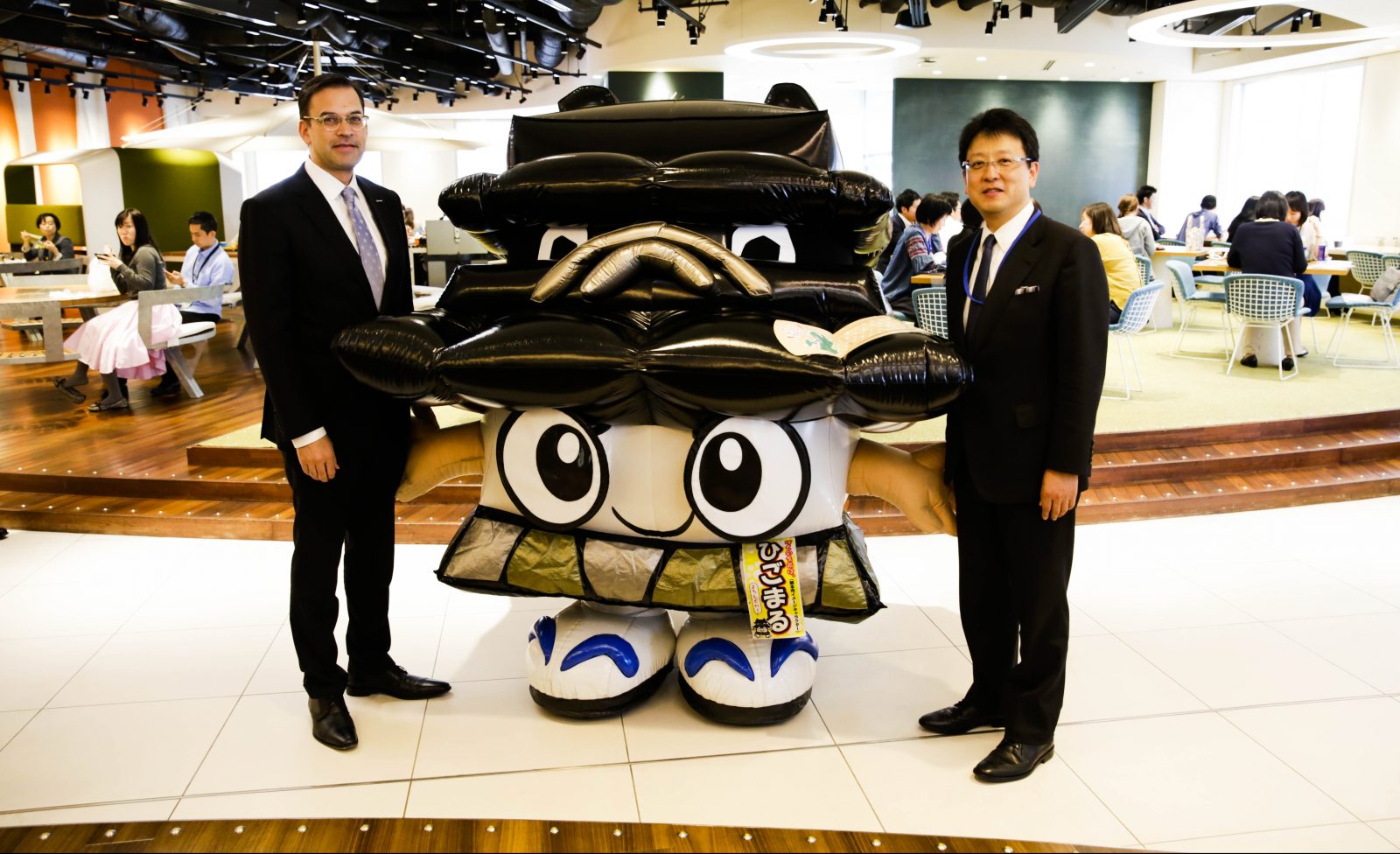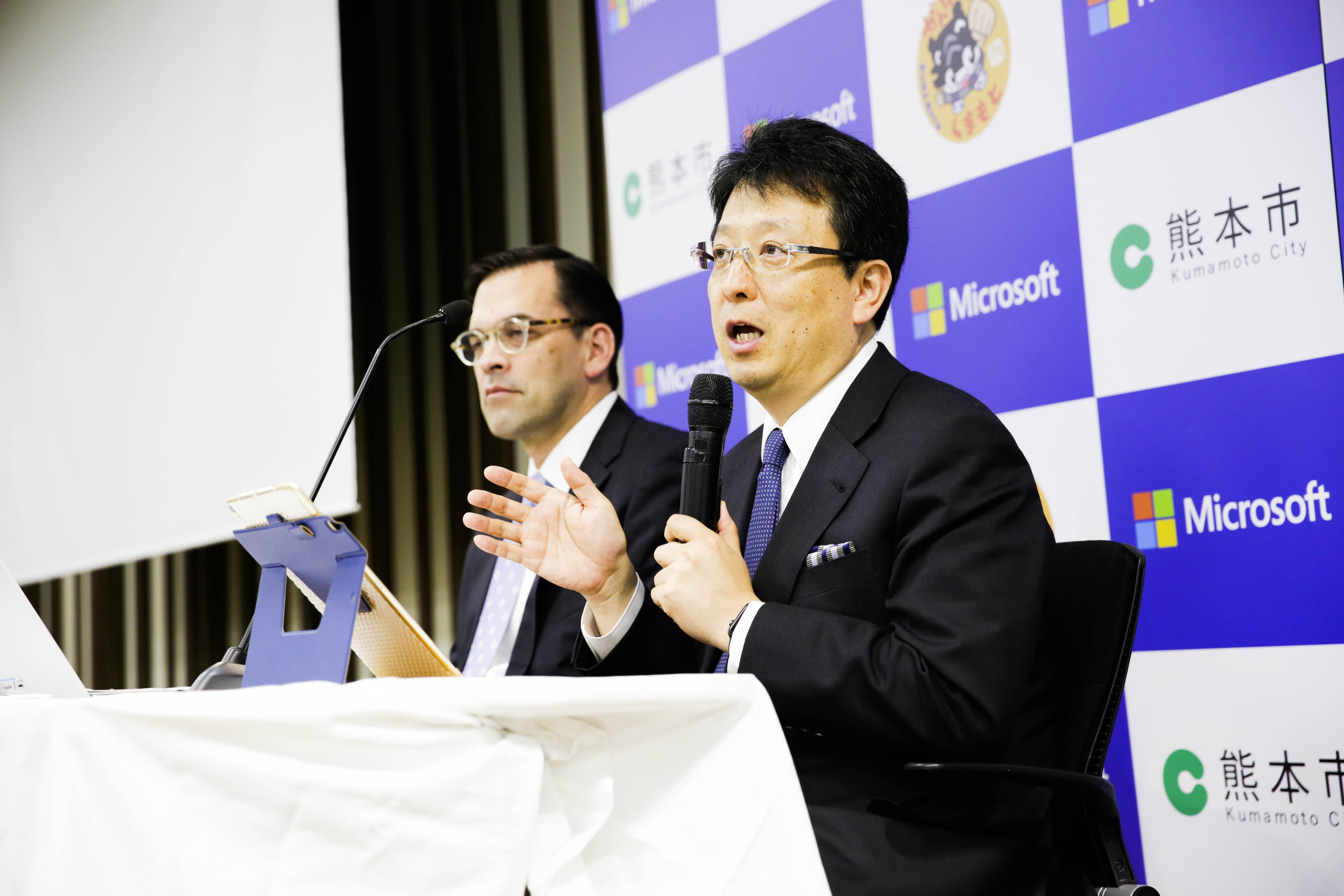
Stronger after two quakes: A Japanese city looks to a digital solution to recover and innovate
Two massive earthquakes within two days devastated the southern Japanese city of Kumamoto in 2016.
The 6.2 and 7 magnitude temblors on April 14 and 16, killed dozens of people, injured thousands, and displaced tens of thousands. Its landmark castle was severely damaged as were hundreds of modern-day buildings and homes. Fires added to the destruction while basic infrastructure and services were thrown out of action – along with businesses, schools and daily life.
To get back on its feet as quickly as possible, and to rebuild for a stronger future, city officials turned to Microsoft cloud-based digital transformation technologies to accelerate recovery efforts.
The result was Kumamoto R-Net. It used Office 365 to enable managers in evacuation centers, municipal authorities, and relief supply centers run their operations smoothly in coordinated and effective ways. It also afforded flexibility to respond to constant changes in the post-disaster environment.
Almost two years later, a revitalized and optimistic “New Kumamoto City” is now expanding its partnership with Microsoft. This time it wants to transform its administrative operations and better the working lives of its 12,500 municipal employees through digital transformation and innovation. The basic aims are to speed up decision-making, improve its administrative services, reduce staff workloads, foster innovation and flexibility, and provide better information to its citizens. It will also bolster disaster preparedness.
Kumamoto City is to deploy Microsoft 365 across all its operations to create a Cloud Solution-Based Workstyle Innovation Platform Building Project. This digital transformation plan will also leverage Microsoft’s tools, knowledge, and experience as a workstyle innovation leader. The plan includes:
- The full-scale utilization of Microsoft 365 to provide public services.
- The testing and implementation of employee workstyle innovation through artificial intelligence (AI) and other cutting-edge technologies.
- The utilization of big data analytics and AI to visualize and improve work conditions.
- The use Microsoft 365 Education to lighten the workloads of approximately 4,500 teachers and administrative staff of Kumamoto’s 136 municipal elementary, junior high, and high schools, so they can have more time to interact with students.
- The building of a stronger disaster preparedness infrastructure that will include public-private partnerships.
At press conference, Kumamoto City Mayor Kazufumi Onishi said his community was now embarking on the second phase of its earthquake restoration plan to rebuild the lives of disaster victims. The key to this would be how it uses limited resources as efficiently as possible, while at the same time ensuring that those in the city’s workforce enjoy life-work balance through innovation. The use of Microsoft 365 would be key in these areas. Kumamoto City was also looking at Microsoft’s own work practices and culture. “If Kumamoto City can gain a similar corporate style and culture to that of Microsoft Japan, we believe we can achieve a truly meaningful Workstyle Innovation,” he said.

Microsoft Japan President Takuya Hirano said Kumamoto City’s cloud solution-based Workstyle Innovation Platform Building Project is the largest digital transformation program of its kind attempted by a local government in Japan. “This unprecedented effort from Kumamoto City as an ICT environment development utilizes public cloud and AI for both the city government and education.”
He said Microsoft Japan would continue to support Kumamoto City efforts and would also share its experiences with other municipalities across the country, including those of public-private partnerships with local firms, related organizations, and non-profit organizations.













